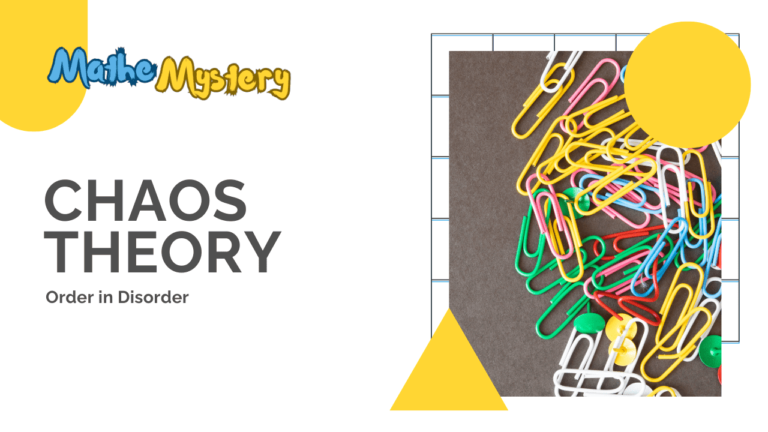- Introduction: How to Apply Chaos Theory
- Key Principles and Concepts
- How to Apply Chaos Theory in Nursing
- How to Apply Chaos Theory in Psychology
- How to Apply Chaos Theory in Management
- How to Apply Chaos Theory in Weather Prediction
- How to Apply Chaos Theory in Traffic Flow Management
- Practical Tips for Incorporating Chaos Theory in Various Domains
- Chaos Theory in Modern Society
- Future Trends and Possibilities
- Conclusion
Introduction: How to Apply Chaos Theory
Chaos Theory is an interesting part of mathematics that deals with the seemingly random happenings and patterns that form our world. Chaos Theory, as its name suggests, deals with complex systems, where small changes can produce major and unpredictable effects called the Butterfly Effect. The complexity theory is based on this paradoxical nature where under disorder there lurks a hidden order to be understood. In this introduction, we will explore the essence of Chaos Theory and discuss how to apply Chaos Theory to deal with complexities and uncertainties.
Key Principles and Concepts
Sensitivity to initial conditions
This captivating mathematical branch focuses on chaos- a system of uncertainty within small inputs yielding different outcomes in various fields. It was pioneered by mathematicians like Edward Lorenz in the middle of last century, who first observed this phenomenon commonly referred to as sensitive dependence on initial conditions (SIC). This principle is one of the fundamental tenets of Chaos Theory – it explains how even slight differences in starting positions can lead to extremely diverse outcomes over time.
Now, the key strategy is to carefully observe initial conditions and how they evolve over time, acknowledging their potential to create significant impacts down the line. By understanding these concepts and applying them effectively, we can navigate and make sense of the seemingly chaotic yet inherently structured nature of various systems in our world.
Non-linear dynamics
However, sensitivity to initial conditions is only a starting point. Furthermore, non-linear dynamics as another fundamental characteristic portrays systems that behave unexpectedly contrary to conventional cause and effect relationships. The complexity is even heightened further by the Butterfly Effect, which refers to how a minor action such as a butterfly flapping its wings can initiate a domino effect that will ultimately affect great events.
The Butterfly Effect
The Butterfly Effect is a key concept in Chaos Theory that illustrates how small changes or actions in a system can lead to significant and unpredictable outcomes over time. The term originated from Edward Lorenz’s work in meteorology, where he observed that even tiny differences in initial conditions, such as the flapping of a butterfly’s wings, could potentially cause large-scale effects, like influencing the weather patterns in distant locations. This phenomenon highlights the sensitivity of complex systems to initial conditions and emphasizes the non-linear nature of their behavior, where small inputs can result in amplified and sometimes unexpected consequences.

Identifying Patterns in Chaos
A key part of Chaos Theory is understanding the power of patterns within chaotic systems. Chaos theorists emphasize unveiling patterns in apparent chaos, as these hidden patterns contain valuable information and insights.
By carefully studying data and watching for recurring aspects, scientists and professionals can uncover underlying structures in this kind of disorder. Harnessing these patterns for predictability and control tells us about how to apply Chaos Theory. For instance, investors looking to trade in financial markets can identify patterns in asset prices to help make informed decisions about them and understand how they will develop over time.
Similarly, identifying patterns from atmospheric records improves weather forecasting by giving clearer images of hurricanes or other meteorological phenomena. Understanding complex systems through harnessing their inherent tendencies thus allows a person to navigate and manipulate them better.
How to Apply Chaos Theory in Nursing
Chaos Theory offers valuable insights and tools for navigating the complexities of healthcare systems, particularly in the field of nursing. One way to apply Chaos Theory in nursing is by understanding patient outcomes through a holistic and dynamic lens. Rather than viewing patient care as a linear process with predictable outcomes, Chaos Theory encourages nurses to consider the interplay of various factors that can influence patient health and recovery. This includes recognizing the sensitivity of patient conditions to initial interventions and the potential for small changes to lead to significant shifts in outcomes.
Moreover, Chaos Theory provides a framework for managing complex healthcare systems effectively. Nurses can apply Chaos Theory principles to analyze and adapt to the ever-changing dynamics within healthcare facilities.
By recognizing patterns and trends in patient care, resource allocation, and workflow management, nurses can make informed decisions that optimize patient outcomes and enhance overall system efficiency.
How to Apply Chaos Theory in Psychology
Chaos Theory offers a unique perspective in understanding human behavior within psychology. Applying Chaos Theory to psychology involves examining how small changes in individual thoughts, emotions, and actions can lead to complex and often unpredictable behavioral patterns. By studying these dynamics, psychologists gain insights into the interconnectedness of various factors that influence human behavior, such as social interactions, environmental stimuli, and internal cognitive processes.
Furthermore, Chaos Theory has profound implications for therapy and counseling practices. Therapists can use Chaos Theory principles to help clients navigate through turbulent emotional states and life transitions. By acknowledging the nonlinear nature of human emotions and experiences, therapists can assist clients in recognizing patterns, identifying triggers, and developing adaptive coping strategies.
How to apply Chaos Theory in therapy involves fostering resilience and flexibility, empowering individuals to embrace change and uncertainty as part of their growth journey.
How to Apply Chaos Theory in Management
Chaos Theory presents valuable insights for understanding and managing complex organizational dynamics within management. Applying Chaos Theory in management involves recognizing the potential for small changes to have significant impacts on overall outcomes. By studying organizational dynamics through a Chaos Theory lens, managers can gain a deeper understanding of how different departments, teams, and individuals interact and influence one another.
Moreover, Chaos Theory offers guidance for enhancing decision-making processes within organizations. Rather than relying solely on linear models or rigid structures, managers can use Chaos Theory principles to embrace uncertainty and adaptability in decision-making. This includes encouraging experimentation, fostering creativity, and leveraging feedback loops to make iterative and informed decisions.
How to apply Chaos Theory in management requires a shift from traditional hierarchical approaches to more agile and responsive strategies, where resilience and flexibility are key assets in navigating complex and ever-evolving business environments.
How to Apply Chaos Theory in Weather Prediction
Chaos Theory provides a powerful framework for understanding and predicting complex systems, such as weather patterns and atmospheric dynamics. The atmosphere’s inherent chaotic nature makes long-term weather forecasting challenging, as small variations in initial conditions can lead to significant deviations in predictions over time. Despite this unpredictability, researchers and meteorologists use Chaos Theory to analyze historical data and identify larger weather systems’ characteristics.
By collecting a diverse range of initial states and studying the interactions between different weather regimes, they can gain insights into weather variability in regions like the northern hemisphere. How to apply Chaos Theory in weather prediction involves leveraging mathematical models and data analysis to navigate the complexities of atmospheric behavior, ultimately improving the accuracy and reliability of weather forecasts.
How to Apply Chaos Theory in Traffic Flow Management
Chaos Theory’s application in traffic flow management is exemplified by studies that analyze dynamical systems using characteristic features of chaotic systems. For instance, researchers have employed Chaos Theory to predict motorized traffic flow time series in urban transport networks. By computing the Largest Lyapunov Exponent, which is a robust method for analyzing chaotic behaviors, they can determine the Lyapunov time interval crucial for accurate traffic flow predictions.
However, developing a comprehensive prediction model entails creating a computer-based algorithm to compute time delays, embedding dimensions, and Lyapunov time from empirical traffic flow data.
Future work involves validating and comparing this approach with conventional models, addressing noise effects, and establishing mathematical relationships between Lyapunov time and traffic flow. These efforts aim to contribute significantly to reducing congestion on urban traffic networks through improved prediction accuracy and efficiency.
Practical Tips for Incorporating Chaos Theory in Various Domains
Observing Patterns and Trends
– Actively monitor data for recurring patterns and behaviors.
– Analyze trends to gain insights into system dynamics.
Adapting to Changes Dynamically
– Be flexible and responsive to evolving situations.
– Adjust strategies as needed to capitalize on opportunities or mitigate risks.
Utilizing Data Analysis Tools
– Use mathematical models and algorithms to analyze complex data sets.
– Employ data visualization techniques to identify patterns more effectively.
Embracing Uncertainty
– Acknowledge the inherent unpredictability in complex systems.
– Develop strategies to navigate uncertainty and make informed decisions.
Collaborating Across Disciplines
– Engage experts from different fields to gain diverse perspectives.
– Foster interdisciplinary collaborations for holistic problem-solving.
Experimentation and Iteration
– Conduct experiments to test hypotheses and validate findings.
– Iterate and refine approaches based on empirical evidence and feedback.
Continuous Learning and Improvement
– Stay updated with advancements in Chaos Theory and related fields.
– Seek feedback and insights from peers and mentors to enhance understanding and application.
Chaos Theory in Modern Society
In today’s rapidly changing technological world, Chaos Theory plays an important role in shaping innovations and advancements. One way to apply Chaos Theory in modern society is through technology, where complex systems and algorithms are designed to harness the power of chaos for positive outcomes.
For instance, Chaos Theory is essential in developing predictive models for weather forecasting, optimizing traffic flow in smart cities, and enhancing cybersecurity measures. By understanding the nonlinear dynamics of these systems, engineers and scientists can create innovative solutions that improve efficiency, resilience, and overall performance. This integration of Chaos Theory into technology not only drives progress but also opens doors to new possibilities and discoveries.
Future Trends and Possibilities
Looking ahead, the evolving applications of Chaos Theory hold immense potential for transformative breakthroughs in various fields. As researchers delve deeper into understanding and utilizing Chaos Theory, new avenues of exploration emerge, leading to groundbreaking innovations. One such area of focus is the application of Chaos Theory in healthcare, where predictive models based on chaotic dynamics could revolutionize patient care and treatment outcomes.
Additionally, the exploration of chaos in artificial intelligence and machine learning promises to unlock new capabilities and efficiencies in data analysis and decision-making processes. By harnessing the power of chaos, we stand at the brink of a paradigm shift, where possibilities for advancements in science, technology, and society are boundless.
To learn about using Artificial Intelligence (AI) in solving Traveling Salesman Problem, read Applications of the Traveling Salesman Problem.
Conclusion
In conclusion, Chaos Theory offers a captivating lens through which we can understand the intricate dynamics of complex systems, from weather patterns and financial markets to human behavior and technological innovations. By observing patterns and trends, adapting to changes dynamically, utilizing data analysis tools, embracing uncertainty, collaborating across disciplines, experimenting and iterating, and continuously learning and improving, we can effectively apply Chaos Theory across various domains.
This approach not only drives innovation and progress in modern society, especially in technology and healthcare, but also opens up new possibilities and breakthroughs for the future. Therefore, I encourage everyone to embrace chaos as a source of order, recognizing the immense potential it holds for shaping a better and more resilient world.




